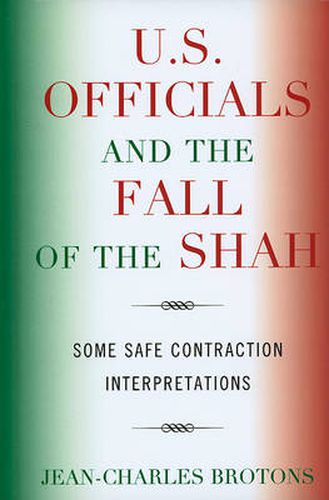Readings Newsletter
Become a Readings Member to make your shopping experience even easier.
Sign in or sign up for free!
You’re not far away from qualifying for FREE standard shipping within Australia
You’ve qualified for FREE standard shipping within Australia
The cart is loading…






Unlike the dominant trend in cognitive approach to foreign policy, the approach in this book is not guided by reflections in psychology. Like part of Jervis’s work, it is inspired by reflections concerning the philosophy of science; yet not by Kuhn’s or those of its most well-known critics, but by some more recent and formal reflections known as the AGM theory.
The AGM theory, proposed in the 1980’s by Alchourron, Gardenfors, and Makinson, is the core of a most dynamic branch of logic, focusing on belief change. It has produced impressive formal results, with echoes in artificial intelligence, database management, and decision and game theory. This book shows how it can be used in political science.
The book includes three parts. Part One is a twenty-page review of the AGM theory, avoiding a number of pitfalls, inaccuracies, and misunderstandings that are common elsewhere. Part Two is a review of U.S.-Iranian relations under the reign of the last shah, focusing on the last years of monarchy, and including an unconventional interpretation of U.S. intelligence performance in 1978. The essential part is Part Three, where an AGM model is tested, and intriguing results obtained in connection with U.S. perceptions of the Iranian revolution.
$9.00 standard shipping within Australia
FREE standard shipping within Australia for orders over $100.00
Express & International shipping calculated at checkout
Unlike the dominant trend in cognitive approach to foreign policy, the approach in this book is not guided by reflections in psychology. Like part of Jervis’s work, it is inspired by reflections concerning the philosophy of science; yet not by Kuhn’s or those of its most well-known critics, but by some more recent and formal reflections known as the AGM theory.
The AGM theory, proposed in the 1980’s by Alchourron, Gardenfors, and Makinson, is the core of a most dynamic branch of logic, focusing on belief change. It has produced impressive formal results, with echoes in artificial intelligence, database management, and decision and game theory. This book shows how it can be used in political science.
The book includes three parts. Part One is a twenty-page review of the AGM theory, avoiding a number of pitfalls, inaccuracies, and misunderstandings that are common elsewhere. Part Two is a review of U.S.-Iranian relations under the reign of the last shah, focusing on the last years of monarchy, and including an unconventional interpretation of U.S. intelligence performance in 1978. The essential part is Part Three, where an AGM model is tested, and intriguing results obtained in connection with U.S. perceptions of the Iranian revolution.